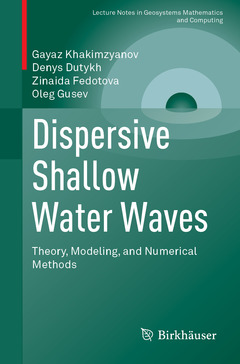Description
Dispersive Shallow Water Waves, 1st ed. 2020
Theory, Modeling, and Numerical Methods
Lecture Notes in Geosystems Mathematics and Computing Series
Authors: Khakimzyanov Gayaz, Dutykh Denys, Fedotova Zinaida, Gusev Oleg
Language: English
Subject for Dispersive Shallow Water Waves:
Keywords
Nonlinear dispersive waves; Dispersive wave; Dispersive wave equation; Dispersive models; Water wave model; Tsunami wave model; Fluid Flow simulation; Fluid Flow spheres; Weakly nonlinear waves; Nonlinear dispersive waves; Wave propagation; Operator splitting; Moving grid method; Moving mesh method
79.11 €
In Print (Delivery period: 15 days).
Add to cart284 p. · 15.5x23.5 cm · Paperback
Description
/li>Contents
/li>Comment
/li>
Presents cutting-edge research on dispersive wave modelling, and the numerical methods used to simulate the propagation and generation of long surface water waves
Demonstrates state-of-the-art, adaptive techniques for modelling real-world natural phenomena, such as tsunami waves, and smaller scale coastal processes
Collects and expands upon the authors’ own research, while providing an overview on existing dispersive models



